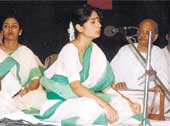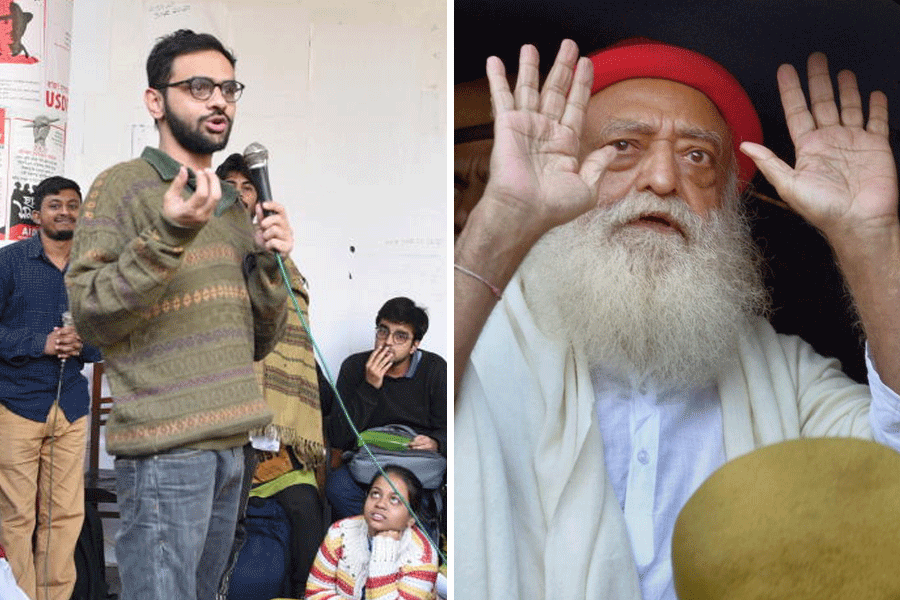 |
| Kamalini Mukhopadhyay performs at Rabindra Sadan (Picture by Shambhu Hazra) |
Panchishe Baishakh celebrations this year amply showed that the musical legacy of Rabindranath Tagore rests handsomely on two opposite yet formidable approaches. One looks inwards, and the other looks outwards. While the former is content in taking the conservative route, the latter finds it hard to negotiate with the trends that keep changing every year. The programmes under review demonstrate this.
Discipline, dedication and decorum were the cornerstone of Dakshinee’s concert at Rabindra Sadan (May 5). If the absence of exasperated mannerisms was the most welcome feature of the evening’s recital, a meticulous planning followed close on its heels. Spread over three segments ? Bichitra, Prem and Puja ? 27 numbers were delivered in solo, duet and chorus. And true to Dakshinee’s standards, there was no dearth of notable renditions. Modulation was the key to Mrinalini Guhathakurta’s mature work of Na go ei je dhula.
The understated cry of Jadi holo jabar kshan was given its due by Sharbari Das. Anirban Bhattacharya’s baritone was expressively restrained in Jadi ase tabe kena jete chay. Alokananda Roy was almost there with Kandale tumi more. Aditi Gupta’s Path cheye je kete gela looked beyond her exquisite vocal skills. Nilanjana Sarkar’s experience saw her through in Aro aghat saibe. Rahul Mitra did a commendable job with Dukkharate hey nath. Among the duets, Kasturi Chakraborty and Aditya Bhattacharya’s Amaar je sab dite habe was unpretentious, throbbing with adolescent cadence. Shono tar sudhabani, a rare Bramhosangeet, topped the chorus honours.
Recital of the day came from Kamalini Mukhopadhyay. Here is one young soprano who has lived up to the great expectations of early years. Her Ki ragini bajale came at the end of the Prem segment. Soaked in the ambiguous melancholy of Kanada, she embellished the number with undulating glides alternating with brisk melodic phrases. The relaxed pace facilitated her measured use of tappa trills without being intrusive. The overall impression was of a soulful prayer.
On the other end, Chakratirtha’s Nana Range Rabindranath (Sisir Mancha, May 10) was a perilous journey through popular taste to etch everyman’s Tagore. It began well with Sumita Paul’s pensive recital of Dakba na aman kare. The 56-minute long play-reading of Bisarjan, conceived by Kingshuk Roy Chowdhury and directed by Bijoy Laxmi Burman, was faithful to the radio drama format and corroborated Tagore’s humanitarian view. The elocution segment produced curious results. Biplab Chattopadhyay struck the right poetic notes. Swapnamoy Chakraborty’s autobiographical prose piece capturing the gradual acceptance of Tagore in middle-class mindset was dealt at length by Raya Bhattacharya. But Soumitra Chattopadhyay, teaming up with Shampa Sen, disappointed in Karna-Kunti Sambad. The other pairing, between Sovan Sundar Basu and Indrani Haldar did a shade better in a dance-interpretation of Nirjharer Swapnabhanga. Later, Basu teamed up with wife Aishwariya to present poems with high adrenaline count. Surajit Chattopadhyay’s forays into Tagore songs were shorn of traditional baggage, in spite of liberties that he took in plenty.










